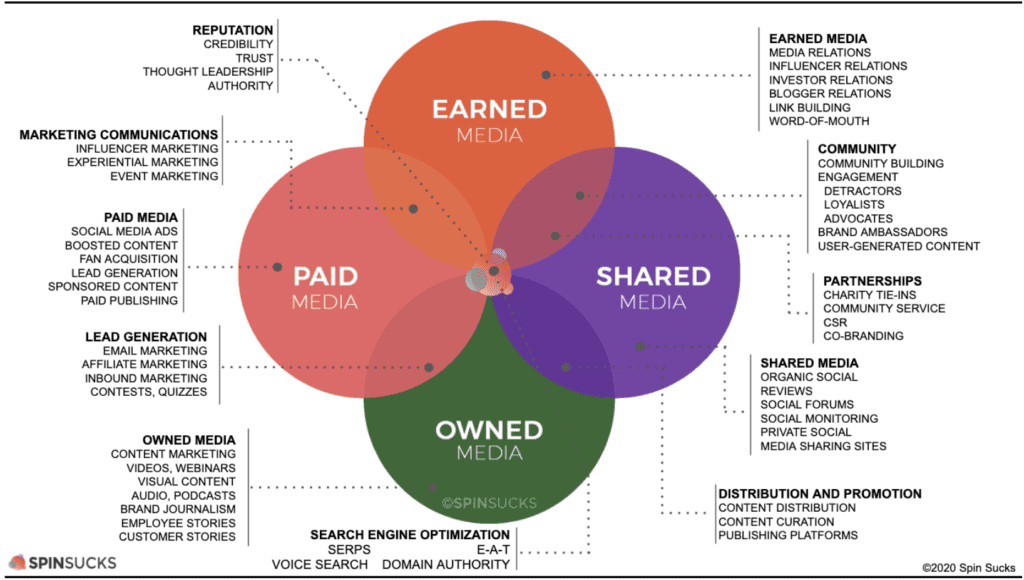This text was written with Marelle intelligence.
There's no need to convince you: today, online visibility and credibility are cornerstones of a brand's success – whether it's publicizing an event, announcing a product launch, or presenting news of public interest, for example. With the media landscape transforming at breakneck speed both in Quebec and around the world, it's important for organizations to understand and effectively apply media relations and influencer marketing strategies. Integrating these approaches, particularly with the PESO model (Paid, Earned, Shared, Owned) which I personally love using to get a bird's eye view of a brand's communications ecosystem, can create a synergy powerful enough to reach new heights of customer recognition and loyalty.

Understanding the PESO model
The key takeaway is that the PESO model segments communication and marketing strategies into four types of media:
- Paid (Paid): anything you pay for, like online advertising and sponsored posts.
- Acquired (Earned): media coverage, mentions, reviews, and any content generated by third parties in your favor.
- Sharing (Shared): content shared on social media, whether from you or your fans.
- Possessed (Owned): the content you create and control, such as your website, blog, and newsletters.
The extent of press relations
Historically based on gaining traditional media coverage, press relations today embrace a much broader spectrum that includes blogs, podcasts, and online platforms, to name just a few. Positioned primarily in the Earned category of the PESO model, Press relations can also influence and be influenced by other categories, thus creating cross-media opportunities.
Influencer marketing, a lever for growth
Influencer marketing generally finds its place in the Paid and Shared categories. Influencer partnerships, ranging from sponsored posts to creative social media campaigns, allow you to reach new audiences in a more natural and engaging way.
Creating a happy combination between press relations and influencer marketing
Integrating press relations and influencer marketing within the PESO model offers a more holistic approach to brand communicationFor example, a successful campaign might start with a product being promoted by influencers (influencer marketing), generating media interest (press relations), while being amplified by paid ads (paid media) and discussed on your own platforms (owned media).
Practical tips for implementing the PESO model
- Analyze your current situation: Identify the strengths and weaknesses of your strategy in each of the PESO categories.
- Set clear goals: What results do you want to achieve in each category? More media coverage? An increase in social media engagement?
- Create quality content: Whether it's for owned media or to encourage sharing and gain the attention of influencers, content remains (you guessed it) king.
- Measure and adjust: Use analytics tools to measure the effectiveness of your strategies and don't hesitate to adjust your approach based on the results.
The integration of press relations and influencer marketing into a global strategy, supported by the PESO model, offers an unprecedented opportunity to gain visibility and strengthen credibilityBy skillfully navigating between these different channels, you can create a robust and dynamic online presence that engages and builds loyalty.
Want to talk about it?
We'd love to hear how you've used PR and influencer marketing in your communications strategy. Share your experiences with us or contact us to explore how to maximize your impact with the PESO model.
